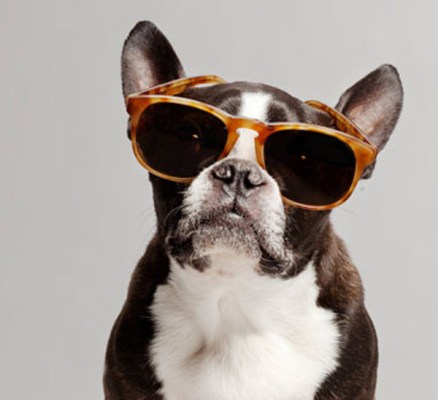Editor’s Note: Semil Shah is an EIR with Javelin Venture Partners and a contributor to TechCrunch. You can follow him on Twitter at @semil.
A few years ago, when I was going back and forth to India for work, I’d routinely carry with me the eye prescriptions and a few old frames for some of my family members in the States. They didn’t want to pay local prices in the States because they knew the deal back home — for a small fraction of the cost, they could get their new prescriptions and probably a couple of spare pairs of glasses to boot.
Warby Parker picked up on these gross inefficiencies by monitoring thousands of people like me. Much has been written about the company, so I won’t rehash that here, but I will point out a 60 Minutes segment earlier this year that featured a relatively unknown yet powerful company — Luxottica — which has a stranglehold on the supply of branded eyeglasses and retail stores and, as a result, enjoys near-monopoly status.
Every now and then on Twitter, someone will emerge in my stream asking something like: “We need a Warby Parker for _____________.” The last one I remember was “a Warby Parker for mattresses,” which struck a chord with so many who have suffered at the crony hands of mattress dealers and fraudulent labels. This particular subject was brilliantly brought to light by the excellent economics blog written by the folks at Priceonomics. In order to define what the analogy means, we first need to identify what Warby stands for in this regard: a company that sells goods that are traditionally known to be artificially priced by creating their own supply chain of goods and/or, in some cases, their own manufacturing processes. Then, to call for something is “a Warby Parker for __________” implies that we, as consumers, want to fill in the blank with goods we all know to be unnecessarily expensive. Put another way: The rent is too damn high!
What are some things we need “a Warby Parker for”? How about picture frames, bed linens, razor blades (Dollar Shave Club), shoes (Milk & Honey), jeans, golf clubs, wedding dresses, diamonds (with synthetics), insurance, and clothing (Bonobos, BlankLabel, Everlane, and many many more). There’s really no end, and with a stagnant economy and uninspiring macroeconomic conditions even in some of the fastest-growing countries, the opportunity to take on the reinvention of these branded products, their supply chains, their customer service, and their business models has never been better. At the same time, these types of changes in production can not only help bring prices down to reasonable levels, but could also increase quality.
Prices alone, however, aren’t enough. Consumers often want to buy a brand name, in the same way a “Sealy” mattress or a “Ping” golf club creates a promise and expectation of quality with the customer. Most startups pursuing this model are keen to this. They know consumers want some way to identify with the new brand they’re creating to be able to return items, have their comments or complaints handled in a reasonable time frame, as well as to accommodate fixes, replacements, and all other aspects of handling a goods business. Basically, all of these components make up a monster opportunity for the next entrepreneur who is tired of the status quo.
It sounds cliche, but with a few startups listed above to validate the model, there couldn’t be a better time to pick an unreasonably priced product, study its (in)elasticity of demand, analyze its components and supply chain, and conceive of an entirely new brand — a reinvention, if you will — that simply follows the mantra, “a Warby Parker for ______,” where almost anyone can fill in the blank.
Photo Credit: Warby Parker
